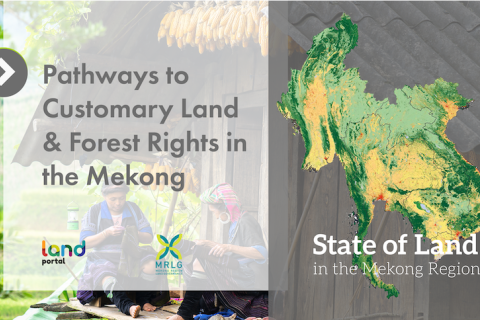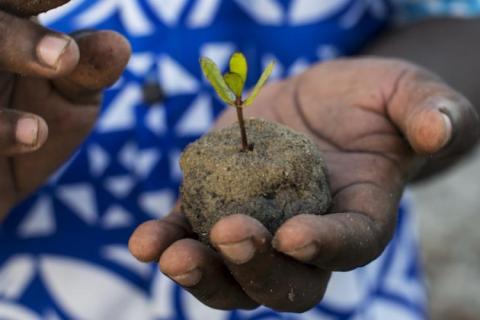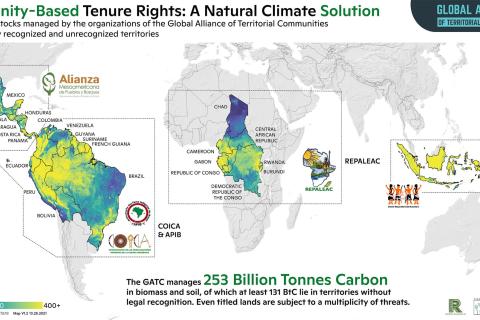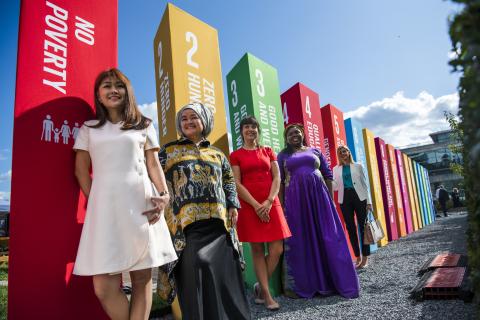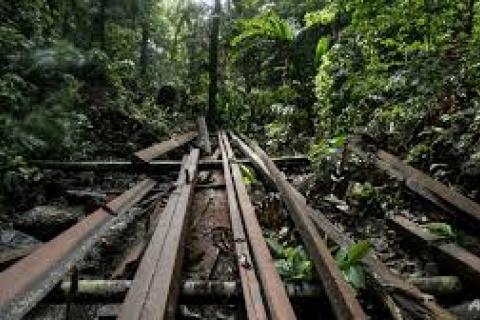A new study, published ahead of the International Day of Forests, warns that the Amazon is now nearing its tipping point; its ability to recover from disruption, such as droughts or fires, is rapidly reducing, increasing the risk of dieback of the Amazon rainforest and potentially releasing up to 90 billion tons of greenhouse gases into the atmosphere.
Securing and protecting the rights of Indigenous peoples and local communities (IPLCs) can help safeguard our tropical forests, allow the natural world to recover its resilience and protect us against climate change. At COP26, countries and major donors pledged $1.7bn to support IPLC forest tenure rights, recognising the crucial role IPLCs play in protecting forests and biodiversity.
Yet, unmapped and undocumented, many long-standing IPLC stewards of vulnerable lands are often legally invisible even to their own governments. According to the Rights and Resources Initiative (RRI), IPLCs customarily hold and use more than 50% of the world’s land, but only legally own 10% of the world’s land; another 8% of the world’s land is designated for their use.
This lack of legal recognition can make such communities insecure about their ability to stay on their land, and prey to land grabs by those seeking gains from mining, logging or opportunities from carbon credits.
The pledges and promises of COP26 now need to be followed up with deeds. Urgent action is needed by governments to respond to IPLC demands for legal recognition, protection and enforcement of rights, and support IPLC aspirations for sovereignty, control of natural resources, and pursuit of human and cultural well-being.
A pathway to scaling up recognition of IPLC rights
Most of the forest-containing countries of the world have some sort of legal basis through which IPLC rights can be recognised, but too few are actually using these laws to provide recognition to IPLC groups and territories. In many cases, to do so would contravene powerful vested interests in timber, resource extraction, and even interests in the conservation sector in some places.
The world needs a better pathway to scale up recognition of IPLC rights, one which demands action and holds governments to account. We already have tools that we can use to strengthen accountability and raise the political costs of inaction: improved “rules of the game” for carbon credits based on forest conservation which recognise IPLCs; bi-lateral and multilateral assistance linked to actions to recognise and enforce IPLC rights; moratoria on forest products from non-compliant countries; and supporting organised pressure from IPLC groups.
This process will also require more transparent information about IPLCs specific needs, about where and how progress is being made, and about the outcomes and impacts of improved recognition of rights.
Ensuring IPLCs are at the centre of decisions over their future
New efforts are being made to capture and disseminate information on IPLCs’ specific needs and concerns. A forthcoming study of five IPLC communities (campesino, Indigenous peoples and Afro-Colombian communities) in Colombia, by the Javeriana University with the International Land Coalition and Prindex, assessed the perceived tenure security of people within those communities – one of the only direct measures of tenure security for IPLC groups collected to date. When asked how worried they were about losing their land or property (one measure of perceived tenure insecurity), the percentage of people who said they were worried was meaningfully higher than the national average (urban and rural) in Colombia; almost 80% of respondents said they were worried or very worried about losing land compared to the average across all of Colombia in 2018 of 24%.
The $1.7bn on the table is a great step forward for recognition of IPLC rights, but plans on how to allocate this money need to be made and followed up on, based on the principle that IPLCs themselves should be the central recipients and decision-makers about the investments. The challenge is now to turn these pledged sums into specific commitments that catalyse the pathway to scaling up rights recognition and best help halt, and reverse, forest loss.
IPLC leadership, financial contributors, governments and the commercial interests in forest need shared information about whose rights are to be clarified and protected, and where securing tenure would have the greatest environmental benefits.
Part of the challenge for allocating these funds effectively to scale up IPLC rights is that ILPCs are not one homogenous group of people, and do not represent homogenous use of lands. Globally – and even nationally – they encompass multiple approaches to land use, govern themselves with different types of internal organisation and cultural practices, and have varying types of relationships with state authorities and forest management agencies.
In some cases, IPLC-held lands also host non-IPLC groups or overlap with potentially competing uses like mining or wildlife protection. As different communities face different pressures and incentives in the way they use their land, the same allocation of money could have very different outcomes.
The study in Colombia revealed that different communities living close by had very different concerns and experiences with their tenure security. For instance, members of the campesino community were worried about losing their home due to lack of money or resources. But this was not an important reason for the other communities. Findings from the Global Comparative Study of Forest Tenure Reform in Peru reinforce this: analysis of 25 Indigenous communities over 40 years in the Peruvian Amazon shows that communities experience far-ranging degrees of deforestation, reforestation and natural forest regeneration, economic activities (for example mining, logging or ecotourism) and world views about nature.
To hold governments, donors, carbon markets and forest users accountable, and get the best returns on investments for forest rights recognition, we need to know which communities are demanding rights help, the kind of assistance they require, and where and how scaling up IPLC rights will best protect forests and other vulnerable lands.
We also need to be able to track whether funds are having their desired impact – strengthening tenure security and improving forest and land cover to mitigate climate change, restore biodiversity and enhance ecosystems. Monitoring where the money is going and how it is spent is an important start but ultimately, we need to go beyond that to ensure that it is spent in the most effective way possible.
Combining commitments, knowledge and data to achieve progress at scale
While we don’t have all the data and know-how we need to support an accountability framework to monitor the $1.7bn immediately, some data that could help us predict these outcomes and channel the funding to the right people is already out there, sitting in silos while our window for action closes.
In addition to gathering new data, we need to work better with what we’ve got – this means a commitment to open data, ramping up collaboration, making the most of new technologies and longstanding participatory data collection methods – and importantly, putting IPLCs at the heart of decision making, planning and monitoring.
That’s why Prindex, Landmark and the Land and Carbon Lab are coming together to explore ways of integrating our different datasets and technological know-how to scale up the mapping IPLC lands, assess their tenure security, and monitor the impact on forest and land cover.
So far, Landmark has just a quarter of the world’s IPLC lands mapped on the platform – making more visible who those groups are and where they live – and is scaling up their coverage around the world.
The Land and Carbon Lab uses remote sensing data to monitor forest loss and is now working with Google Earth to expand the depth and breadth of that data to track all forms of land cover, land use and land-use change globally, plus the associated carbon stocks and flows.
Prindex assesses people’s sense of insecurity, which can be used to predict and influence land use behaviour, with an approach that can be tailored to different tenure forms and systems.
Combined, these data points can provide a clearer picture to plan how to support IPLC-led plans for allocating the new funding and monitor the impact it is having. Our hope is to create national datasets, regional and global maps, working with IPLC groups all over the world to think through how best to do this.
We can achieve progress at scale: we have the know-how and expertise, particularly within IPLC groups, and we’ve already made a good start at collecting data. Let’s work together to hold governments accountable to implement and enforce their own laws, scale up and accelerate action for recognition of IPLC territories so we have our coalitions and plans in place before COP27. Without this, the forest resources and the forest peoples who protect them may not be able to play the role in climate mitigation and adaptation on which so much depends.

